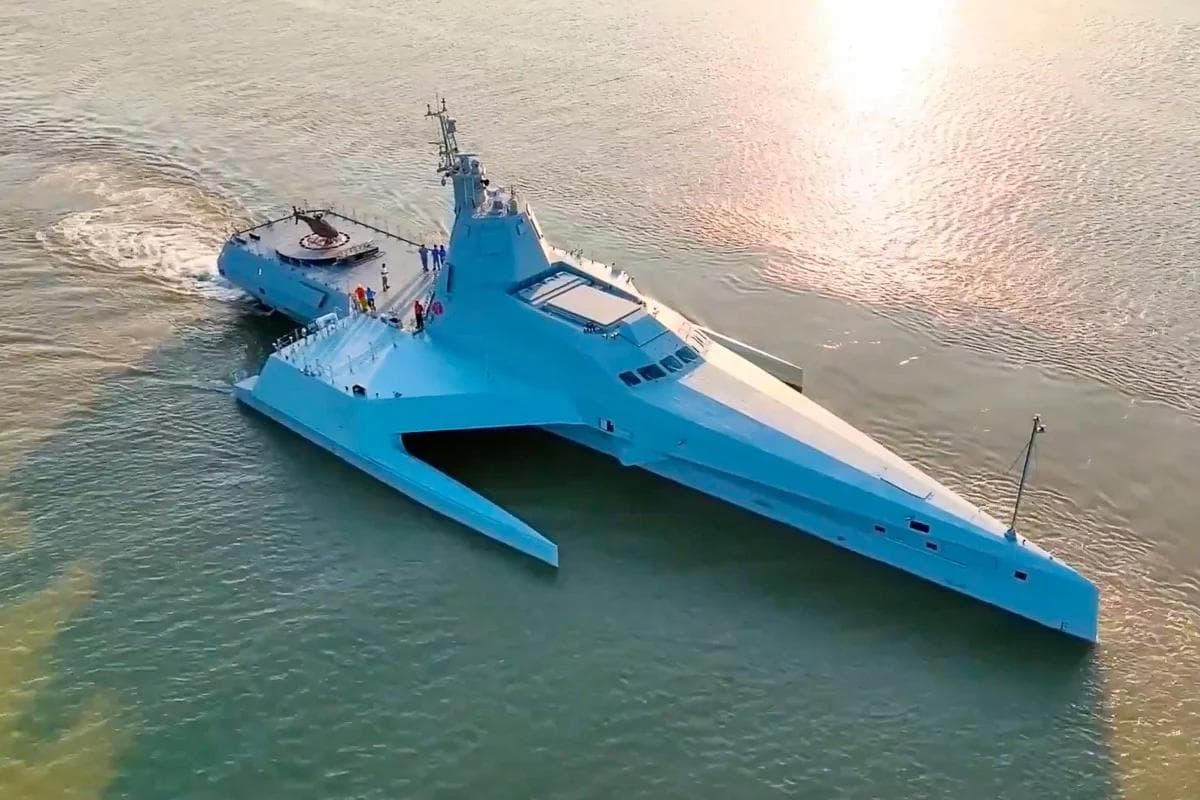The Manta Ray UUV is a highly advanced underwater drone that can operate independently. Its unique design is expected to significantly improve underwater missions with its exceptional endurance, adaptability, and stealth.
Key Takeaways About DARPA's Manta Ray UUV:
General Information
Name and Type:
- The Manta Ray is a futuristic unmanned underwater drone developed by the Defense Advanced Research Projects Agency (DARPA).
Purpose:
- It is designed to change underwater warfare by operating as a self-governing unmanned underwater vehicle (UUV).
When It Was Revealed:
- The U.S. Department of Defense unveiled the Manta Ray program in February 2020.
Initial Funding:
- Lockheed Martin received $12 million for research, development, and demonstration.
Project Partners:
- Initially involved Northrop Grumman, Metron Incorporated, and Martin Defense Group for the project's second phase.
Design and Capabilities

Cool Features:
- Can stay underwater for a long time and travel far.
- Works without needing people nearby to help or fix it.
- It can find and identify underwater hazards on its own.
- Built to withstand corrosion and biofouling (like algae and barnacles).
What It Looks Like:
- Sleek, metal design similar to a stealth bomber.
- Concept art shows a craft resembling a manta ray with broad wings and a flat profile.
Technological Innovations

Energy Collection:
- Uses advanced methods to generate energy underwater sustainably, possibly with thermal gradients or reversed electrodialysis.
Self-Governing Abilities:
- Has advanced navigation and can avoid obstacles on its own.
- Can carry out missions without human help for long periods.
Smart Communication:
- Uses data bubbles to send information to command centers while staying underwater.
Deployment and Mobility

Testing It Out:
- By April 2024, Northrop Grumman tested a full-scale prototype off the coast of California.
Getting It There:
- It can be broken down into five standard shipping containers for easy transport.
- Modular design allows for quick assembly and deployment, and it can stay underwater in a dormant state indefinitely.
Potential Uses
Military Jobs:
- Offensive operations, surveillance, submarine detection, laying mines, and reconnaissance.
Scientific Work:
- High-precision sonar mapping of the sea floor and other ocean studies.
Future Impact:
- It could change naval warfare with its ability to perform long missions on its own, potentially disrupting traditional naval tactics.
Additional Facts
Long-Lasting and Low Maintenance:
- Designed to handle underwater corrosion and biofouling by itself, extending its operational life.
Stealthy Operations:
- Low acoustic and visual signature to avoid detection, perfect for covert operations.
Data Gathering:
- It can collect a lot of data during missions, which can be analyzed for strategic insights.
Power and Payload:
- Advanced propulsion systems enhance maneuverability and endurance.
- The payload-capable design allows it to carry different equipment for various missions.
Team Effort:
- DARPA continues working with top defense contractors and research institutions to improve the Manta Ray. The program manager emphasizes that these collaborations are essential for keeping this underwater drone on the cutting edge.













